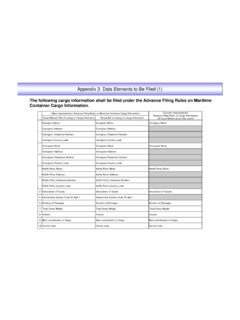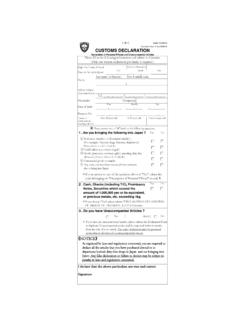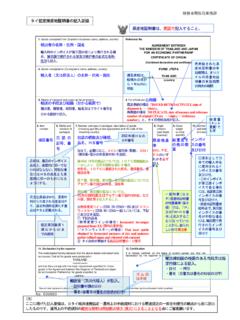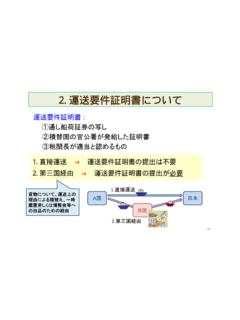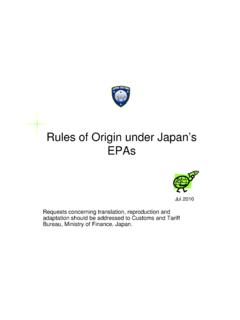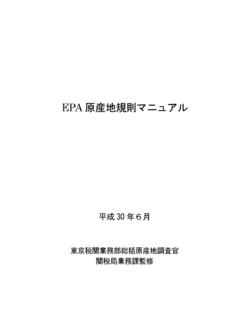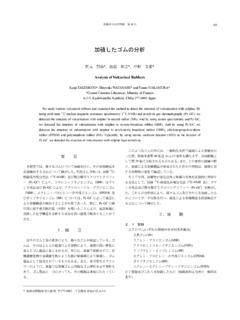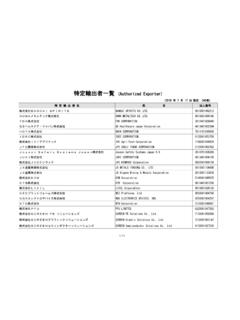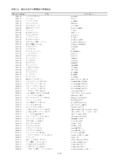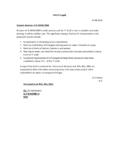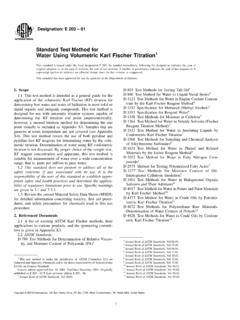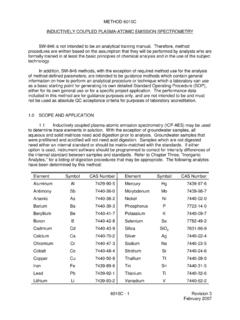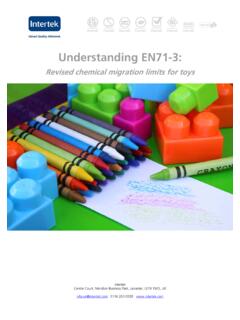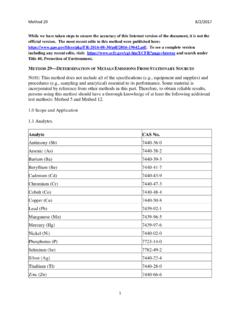Transcription of Quantitative Analysis of Reducing Sugars in Sugar ...
1 JCAM 1 of Page 6 Japan Customs Analysis Methods No. 114 Quantitative Analysis of Reducing Sugars in Sugar Pr eparations consisting of Sugar and Dextrin (Issued in June 1999) (Updated in May 2001) 1. Scope This Analysis method is applied to Sugar preparations which consist of Sugar and dextrin and which require the determination of their Reducing Sugar contents, expressed as dextrose on dry substances, as referred to in Note 2 to Chapter 35 in Customs Tariff Law (Appendix Table Customs Tariff Schedule).
2 2. Outline of Test Method This analytical method is applied for products containing sucrose and dextrin (starch degradation products) to determine Reducing Sugars , dextrose and maltose, contained in the dextrin. The procedure is summarized below. (1) Determination of moisture content (2) Determination of direct Reducing Sugars by the Lane-Eynon method (3) Determination of sucrose by the Lane-Eynon method (4) Determination of the content of dextrin (5) Calculation of DE value 3. Reagents All chemicals must be JIS special reagent grade or equivalent, unless otherwise specified.
3 Preparation of standard dextrose solution for making a calibration curve Accurately weigh about 1 g of dextrose, transfer to a 1,000 mL volumetric flask, and dilute to volume with wa te r. Preparation of standard dextrose solution for standard-addition Accurately weigh about 4 g of dextrose, t ransfer to a 100 mL volumetric flask, and dilute to volume with water. Preparation of standard invert Sugar solution and other reagents (1) Standard invert Sugar solution Accurately weigh g of sucrose, transfer with 90 mL of water to a 500 mL volumetric flask, and add 5 mL of hydrochloric acid (specific gravity, ).
4 After leaving to stand at 20 30 C for three days, dilute the solution to volume with water and store in a cool dark place. Transfer a 50 mL portion of the solution above to a 200 mL volumetric flask, neutralize with 1 mol/L sodium hydroxide aqueous solution using phenolphthalein as an indicator, and dilute to volume with water. Use the solution as standard invert Sugar solution for the standardization of Fehling s Solution. (2) 1% Methylene Blue solution Dissolve 1 g of methylene blue in water to make 100 mL. (3) Fehling s Solution Solution A: Dissolve g of copper sulfate (CuSO4 5H2O) in water to make JCAM 2 of Page 6 exactly 500 mL, leave it for two days, and then filter.
5 Solution B: Dissolve 173 g of potassium sodium tartrate (KNaC4H4O6 4H2O) and 50g of sodium hydroxide in water to make exactly 500 mL, leave it for two days, and then filter. Standardization of Fehling s Solution Put mL of Fehring s Solution A and 5 mL of Fehring s Solution B into a 200 mL Erlenmeyer flask containing a few glass beads and add from a 50 mL burette mL of the standard invert Sugar solution. After boiling it on an electric stove (heater) for two minutes, add four drops of the methylene blue solution.
6 Complete titration within a total boiling time of three minutes by dropwise addition of the standard invert Sugar solution without preventing boiling until the blue color disappears. Repeat titration twice and calculate the mean of three parallel titrations. (1) Obtain the factor of the Fehring s Solution from the following formula: Factor (2) = / A Where A: Vo l u m e (mL) of the standard invert Sugar solution required Note 1) Use the mean value of the three parallel titrations as A ; duplicate titrations must agree to within mL in the volume of the Sugar solution required Note 2) Calculate factor by rounding off fractions to the third decimal place.
7 The factor must be within a range of 1 Preparation of buffers and enzyme solutions acetic acid buffer (pH ) Weigh 6 g of glacial acetic acid in a beaker, dissolve in 100 mL of water and adjust the pH to using a 5% sodium hydroxide aqueous solution. Transfer the solution to a 1,000 mL volumetric flask and dilute to volume with water. acetic acid buffer (pH ) By adding 120 mL of a sodium acetate to 80 mL of acetic acid, adjust the pH of the mixed solution to Invertase solution Dissolve invertase in the acetic acid buffer (pH ) so that the concentration of invertase becomes 400 units/mL.
8 Enzyme solution for determination of dextrin Dissolve glucoamylase (1,4- -D -Glucan glucohydrolase EC ) and -amylase ( -1,4-Glucan 4-glucanohydrolase EC ) in the acetic acid buffer (pH ) so that their concentrations become 20 units/mL(3) and 80 units/mL,(4) respectively. (5) Note 3) One unit represents the amount of enzymes able to produce 10 mg of glucose from soluble starch (as substrate) every 30 minutes at 40 C and pH Note 4) One unit represents the amount of enzymes able to produce mg of Reducing Sugar , expressed as glucose, from soluble starch (as substrate) per minute at 40 C and pH Note 5)
9 When using enzymes whose potencies or units have been determined based on different definitions, confirm in advance that their recovery rates in digesting 50 mg of corn starch are 100%. Glucose determination kit Use a commercially available enzyme-based assay kit for the determination of glucose (dextrose). Deproteinizing agent Solution A: Dissolve 2 g of zinc sulfate (ZnSO4 7H2O) in 100 mL of water. Solution B: Dissolve g of barium hydroxide [Ba(OH)2 8H2O] in 100 mL of wa te r. 4. Preparation of samples Prepare and collect Analysis samples in appropriate manners, sample reduction methods, etc.
10 , depending on their conditions presented. For powder or crystal mixtures, grind them with a grinder or a mixer. For pasty or wet materials, homogenize them by mixing in mortars. In any case, collect relatively large amounts of samples r a n d o m l y, and grind or mix them to uniformity. JCAM 3 of Page 6 5. Procedure Determination of moisture content Accurately weigh about 2 g of the sample homogenized in 4. in a weighing bottle which has been previously dried to a constant weight. Dry it in a vacuum oven at a temperature of 70 75 C for four hours, cool to room temperature in a desiccator and weigh.
